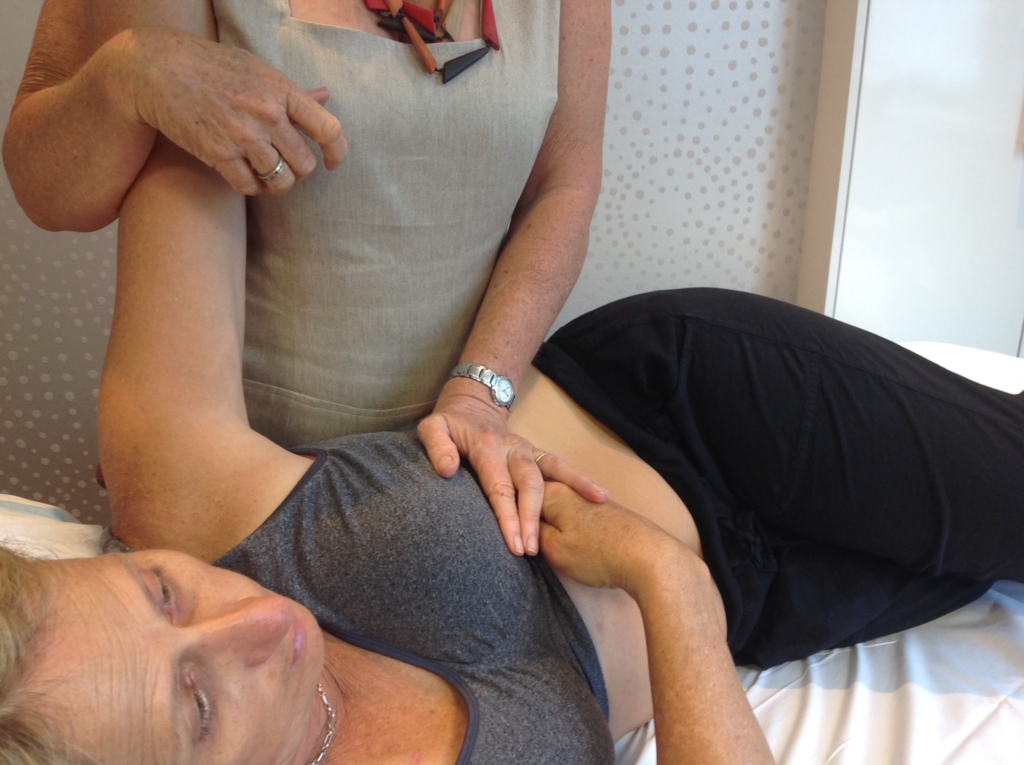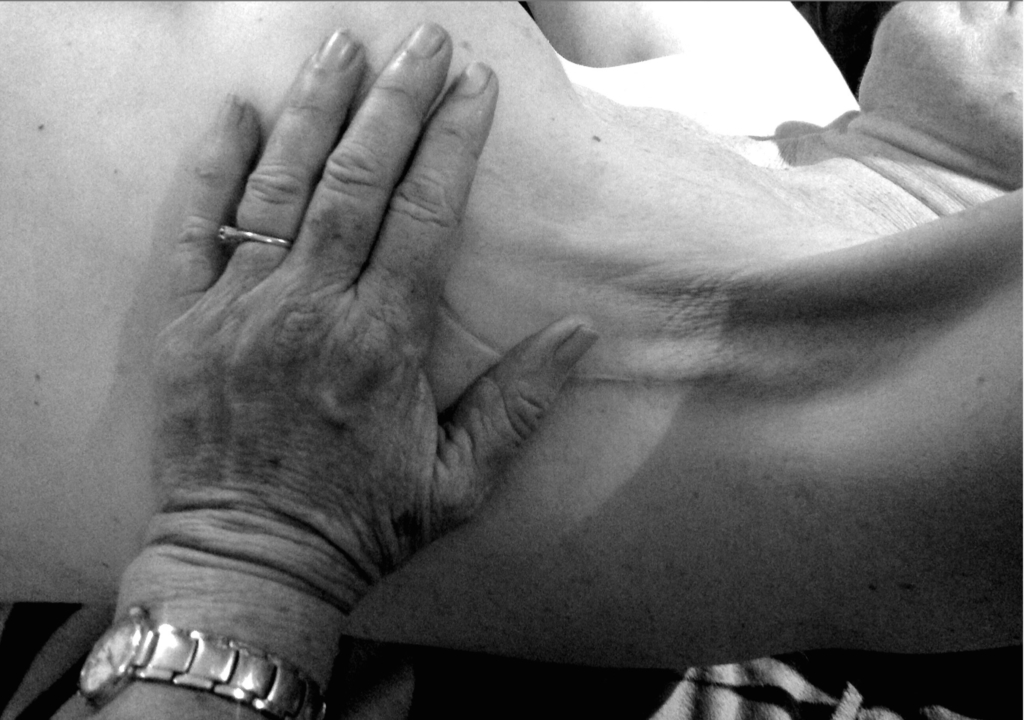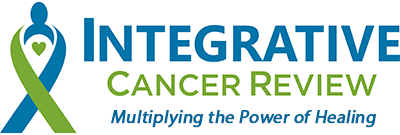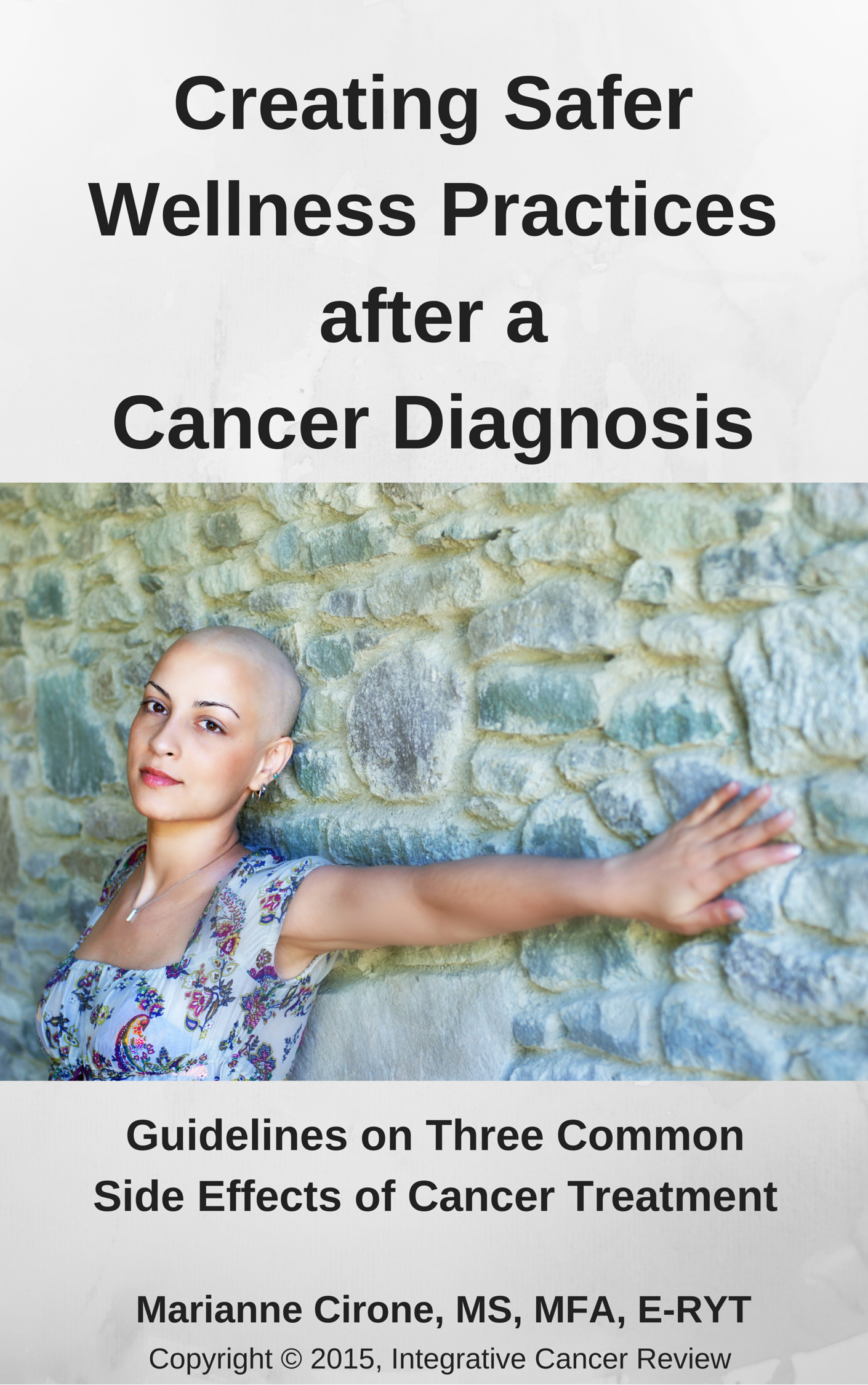
Unfortunately, the same cancer treatments that can help to save patients’ lives can also often result in long-lasting and devastating side effects. Fortunately, there are cancer care professionals dedicated to improving quality of life for cancer survivors and lessening the problematic side effects of cancer treatments.
Occupational Therapist Denise Stewart from Brisbane, Australia, is an expert of breast cancer rehabilitation. She was driving force behind Online International Breast Cancer Rehabilitation Summit 2016. Through this Summit, Denise gathered dozens of worldwide leaders in breast cancer rehabilitation, ranging from physicians and physical and occupational therapists to experts in energy healing and cancer-modified exercise, to share their expertise with cancer survivors and with other health and wellness professionals.
In the following article, Denise shares critical information on breast cancer rehabilitation from her many years of experience in this field.
Denise Stewart, O.T. , (shown on the right), is an Occupational Therapist trained in Australia at University of Queensland. Denise specializes in breast cancer rehabilitation and serves as an international leader in the field.
, (shown on the right), is an Occupational Therapist trained in Australia at University of Queensland. Denise specializes in breast cancer rehabilitation and serves as an international leader in the field.
Denise has launched several innovative projects in breast cancer rehabilitation and is an expert on the treatment of Axillary Web Syndrome (AWS) and has completed the following research projects in 2016: A Review of AWS Case Study Project and the Mastectomy Scar Assessment: A Review of POSAS (Patient and Observer Scar Assessment Scale).
Denise’s YouTube Channel can be found here and she can be reached at breastandshoulderrehab@gmail.com.
I trained as an Occupational Therapist more than 30 years ago. When I started work in 1980’s with women with lymphedema after breast cancer, I saw that there was a lack of voice given to the many problems women experienced as a result of the medical treatments used to save their lives.
My first concern was with the common experience of very tight shoulder movement and pain at the chest and arm. I spent a lot of time developing new assessments and finding rehab treatments to suit the conditions experienced by the breast cancer patients that I saw in my practice.
I have always been interested in helping people experiencing chronic pain, as well as asking patients the question: “has that helped you?” This question has allowed me to better understand, question and research more, and to find solutions for individuals who “failed” to respond positively to the current medical pathways- especially after breast cancer treatment.
Pain and Dysfunction after Breast Cancer Treatment
During the 1990’s and still to this day, in Australia and many other towns/cities in the world, there is recognition that women (and men) after breast cancer can have a very high rate of adverse and chronic pain and performance problems affecting their quality of life. Research shows that six years after breast cancer surgery, 50% of women have a significant amount of chronic dysfunction in their shoulders, namely pain or weakness. However, there are few hospitals that have offered anything more than lymphedema care.
A very serious issue facing patients after breast cancer treatment is Cording, or Axillary Web Syndrome (AWS), which can occur as the breast cancer surgery “heals” and can also occur many months after radiotherapy has finished. This condition can include burning pain or spasms of pain, as well as tightness and limited range of motion. This video explains the effects of Axillary Cording that can develop from scar tissue after breast cancer surgery.
We see many patients with problematic mastectomy scars, however, people who have a lumpectomy, node removal (many) and radiotherapy can also experience problematic scar tissue resulting in pain, and limited arm movement and strength.
Connecting with Breast Cancer Rehabilitation Professionals
I moved into working on private research projects to both “find my tribe” and increase awareness to other health professionals. Through the help of online research papers and LinkedIn, I found that my “tribe” consisted health professionals across the world.
From this work, I have found other therapists and health care workers throughout the world who have been doing similar work to me – those who have seen their particular method of therapy or exercise could be adapted to help women after breast cancer to facilitate a better recovery.
However, existing breast cancer care systems still do not make it easy to access these specialized services. For example, a doctor may not have knowledge about these services, or the time to assess these chronic conditions and to then properly refer patients who are in need of rehab and wellness services. Another problem we see is that the breast cancer survivor does not get routinely assessed or reviewed over the two years for physical and emotional recovery – and this is the time when people start experiencing the delayed effects from their treatment – especially after radiotherapy, mastectomy and some chemo drugs.
In Australia, I have presented my private research at several Lymphedema Conferences. Surprisingly, Breast Cancer or Oncology Rehabilitation is a relatively new term and these conferences have just started over the last two years. One of the problems is that lymphedema therapists have mostly been extremely busy and under-resourced, often with long waiting lists of patients. So I feel that they did not and could not really attend to the information about other problem areas for people after breast cancer, including Axillary Web Syndrome and Cording.
Creating Protocols for Breast Cancer Rehabilitation and Education
In 2014, I developed the Share Cording Protocols Project to help to standardize the protocols for breast cancer rehabilitation and to educate those who can benefit from this information. This project includes a series of videos which demonstrate leading treatment methods for breast cancer rehabilitation used by health professionals across the world. This link connects to the many videos that we have created related to help women across the world who have painful and limiting “cording” which developed secondary to their breast cancer treatments.
Breast cancer rehabilitation therapists have been working hard to find physical treatments that will help women recover arm movement, lost through cording and this project helps to exchange these treatment ideas between experienced therapists.
This project can be readily viewed by doctors, therapists and other health and well-being practitioners who come into contact with these women will be able to see what is possible with specialized treatment. Improved knowledge of services may help to increase referral of women who need this rehab, to a specialized service provider.
In 2015, I also developed the Mastectomy Scar Assessment Survey, which is a project to increase awareness about the need and problems associated with assessing the severity of mastectomy scars.
In 2016, I created the first Online International Breast Cancer Rehabilitation Summit. Our mission is to reduce the unwanted side effects for breast cancer survivors, across the world, by increasing our ability to provide the best “after diagnosis” care options. The truth is that one health care provider will not cut it – patients need a breast cancer aware team!
Self-Treatment Protocols for Pain after Breast Cancer Treatment
I love to develop programs to help individuals get excited about self-managing their particular health problem – especially when it has a muscular/ soft tissue origin.
Here is an example of the treatment I developed:
A lady had so much pain at her chest that she was barely able to touch her chest after a right side mastectomy and certainly did not want her husband to touch her. Her mastectomy scar had healed well and was nice and flat- however her chest area where her breast was removed was painful and very, very stiff and lacked stretch in the soft tissues remaining over her rib cage. The pain was engulfing for her. She came with her husband and he sat aside from us and watched. At the first appointment I did a very gentle therapeutic touch and scar massage technique- the chest where the surgery occurred was extremely tight and the skin did not move much at all.

The woman left with “homework” – to use the same technique each day. After the next appointment, the pain was less and we were able to get the husband to learn and then help with the massage technique. I particularly like the technique that I use – for the partner – as they can tell straight away if it is working – they learn a quick test to measure the improvement in skin and scar tissue stretch. There is a very special feeling in the room when a partner feels like they can help relieve some of the pain for their partner after a mastectomy. This lady’s skin and scar became stretchier and the pain reduced markedly each day over several months.
I am happy when a person struggling with pain after breast cancer says “every night I spend some time treating my scar (homework for some weeks). Now I know, if the pain returns – then I can do a little more home treatment and the pain goes away.
Upcoming Projects to Empower Breast Cancer Survivors
My next projects are to empower breast cancer survivors to take action especially if they have ongoing difficult side effects. I have created the online Summit for breast cancer survivors so that they can see what types of services are available to help them have a better recovery and to help them to identify the assistance that is available in terms of achieving a higher level of wellness.
At the Summit, we will have speakers present on a range of topics:
- Scar tissue, pain and movement problems
- Sexuality and sexual intercourse problems
- How Reiki, Yoga and Pilates can help
- Other activities that can be adapted specifically for breast cancer survivors
- Speakers on methods to help calm and mend the soul and mind
The Summit will be held online in July 2017 – with free access and paid access options. You can register now by contacting me at deniseot@bigpond.net.au.
In addition, we have created an online workshop to help women (or men) after mastectomy know more about their body’s response to their treatment, and to see what scar treatments have been developed across the world to help with problematic mastectomy scar tissue.
These projects are funded by my own private practice, as funds are most often directed solely to breast cancer prevention and medical treatment research – not to managing the adverse after-effects. If there was a like-minded person interested in sponsoring these projects – please connect with me! (deniseot@bigpond.net.au)
Providing services to improve the recovery for people after breast cancer is a very rewarding job, as these cancer survivors live the “problems” each day, and they so appreciate our help in reducing the negative impact from their life saving cancer treatments.
















